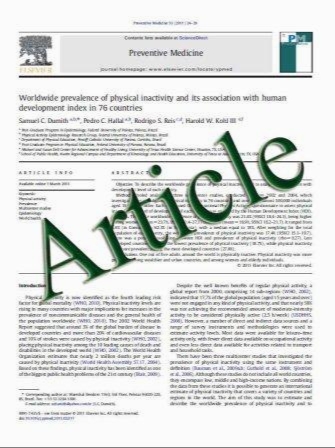High serum TGF-a predicts poor response to lapatinib and capecitabine in HER2-positive breast cancer
- نوع فایل : کتاب
- زبان : انگلیسی
- مؤلف : Jiyoung Rhee Sae-Won Han Yongjun Cha Hye Seon Ham Hwang-phill Kim Do-Youn Oh Seock-Ah Im Jong-Wan Park Jungsil Ro Keun Seok Lee In
- چاپ و سال / کشور: 2010
Description
Lapatinib and capecitabine combination therapy is effective in trastuzumab-resistant human epidermal growth factor receptor 2 (HER2)-positive breast cancer. We investigated the biomarkers from serum of patients receiving lapatinib and capecitabine Patients received lapatinib 1,250 mg once daily and capecitabine 2,000 mg/m2/day, day 1–14, every 3 weeks. Serum samples were obtained before treatment initiation. Levels of transforming growth factor-a (TGF-a), epidermal growth factor (EGF), extracellular domains of EGFR and HER2 were measured by enzyme-linked immunosorbent assay. The effect of TGF-a on in vitro sensitivity of SK-BR-3 cells to lapatinib was investigated. Sixty-four patients were included. Response rate was significantly higher in patients with low serum TGF-a (B3.75 pg/ml) compared to high TGF-a ([3.75 pg/ml) [61.1% (11/18) vs. 17.4% (8/46), respectively; P = 0.001]. Low serum TGF-a was independently associated with better response in multivariate analysis [adjusted odds ratio, 8.96; 95% confidence interval (CI) 2.4–34.2]. Time-to-progression tended to be shorter in patients with high serum TGF-a compared to low TGF-a [median 3.8 months (95% CI 2.3–5.4) vs. 6.5 (95% CI 6.1–6.8), respectively; P = 0.067]. We confirmed that TGF-a diminished the sensitivity of SK-BR3-cells to lapatinib in vitro. The in vitro antiproliferative effect of cetuximab in combination with lapatinib was higher than that of lapatinib alone in SK-BR3-cells exposed to TGF-a. These data suggest that TGF-a plays a role in resistance to lapatinib and capecitabine therapy among HER2-positive breast cancer.
Breast Cancer Res Treat (2011) 125:107–114 DOI 10.1007/s10549-010-1200-9 Received: 12 April 2010 / Accepted: 25 September 2010 / Published online: 9 October 2010 Springer Science+Business Media, LLC. 2010


